In the complex and ever-dynamic world of construction, construction site safety must always command center stage, standing as the sentinel against potential disasters. When safety measures are relegated to the background, the stage is set for tragedy. Thus, it’s paramount that each construction site operates as a meticulous ballet of precaution and preparedness, where every move is orchestrated with the utmost regard for the well-being of all involved.
At South Coast Improvement Company, we recognize that the foundation of construction site safety is rooted in attention to detail. In our comprehensive listicle, we present the top 10 construction site safety tips, each thoughtfully selected to reinforce the protective measures of your safety protocol. This essential collection acts as a framework to cultivate a robust culture of construction site safety. It provides workers with the necessary best practices and knowledge to navigate potential hazards, ensuring they can leave the site each day, unharmed and with peace of mind.
1. Conduct Regular Safety Training
Safety training is much more than a rudimentary aspect of workplace protocol; it forms the very foundation of a secure and efficient worksite. The importance of this aspect of workplace culture cannot be overstated – it’s about fostering a deep-seated belief among the workforce that safety transcends the mere act of ticking boxes on a standard checklist.
View Our Work
Evergreen Place: Pegasus Senior Living
The project included renovations of common areas, painting, and installing new carpets, and a fully remodeled dining room completed at night to not disrupt the resident’s daily lives. Eleven resident rooms were remodeled with new millwork, lights, paint, trim, base,...
Cardinal Cushing Centers
South Coast Improvement Company was hired to provide tenant improvements at the Cardinal Cushing Centers Group Residence. This fast-paced 22-week, construction project entailed construction of a single-family-style residence. We razed the existing structure on site...
This training instills an ethos where safety considerations are woven into the fabric of daily tasks and responsibilities, ensuring that each action taken on the job inherently accounts for the well-being of all personnel. Comprehensive training is mandatory, encompassing both the broad spectrum of general workplace safety norms and the nuanced details pertaining to particular site-specific risks and operational procedures.
2. Implement Clear Communication Protocols
Effective communication is the cornerstone of not only a functional and efficient workplace but a safe one as well. It is imperative that each individual on-site is thoroughly versed in the precise communication protocols that are active within their work environment. These protocols should clearly define the touch points for day-to-day interactions but must also comprise comprehensive emergency response procedures. Every worker should know without hesitation their respective emergency assembly point, the direct contact details for their supervisors, and the structured hierarchy that governs the resolution and escalation of safety issues.
Furthermore, investing in technology to bolster these protocols can significantly mitigate communication lapses and ensure that safety advisories are promptly disseminated. This may encompass a spectrum of tools – from two-way radios that allow for immediate dialogue across the expanse of the job site, to instant communication apps that can broadcast alerts to everyone’s personal devices. By leveraging such systems, it becomes possible to uphold an unbroken and dynamic flow of critical safety information, thereby enhancing the collective situational awareness and responsiveness of the entire workforce.
3. Provide Adequate Personal Protective Equipment (PPE)
The provision of appropriate Personal Protective Equipment, or PPE, serves as the first line of defense against the multitude of hazards that construction workers encounter. It’s essential to recognize that PPE extends beyond the mere availability of protective gears, such as helmets, high-visibility vests, heavy-duty gloves, and steel-toe boots. The selection of PPE should be driven by the job demands and specific conditions of each work site, ensuring optimal applicability and protection.
Nevertheless, offering suitable PPE is only part of the construction safety equation. Ensuring its proper fit and encouraging its consistent use while working on construction sites is critical. PPE that is ill-fitting not only diminishes comfort but, more importantly, compromises construction site safety. Alongside this, the introduction of regular inspection routines is pivotal in maintaining the integrity and functionality of PPE. Vigilance in detecting wear, damage, or any other forms of deterioration must lead to prompt replacement or repair. This rigorous approach to PPE stewardship is fundamental to maintaining an environment where safety is not just observed but ingrained in the very culture of the workplace.
4. Regularly Inspect and Maintain Equipment
To preemptively thwart the risk of equipment failure, consistent and thorough inspections must be intertwined within the daily rhythm of operations. Integrating detailed inspection checklists provides a structured approach to evaluate the readiness and safety of all machinery and tools prior to use. Furthermore, adherence to regular maintenance schedules is non-negotiable; it’s a discipline that safeguards functionality and reliability.
When equipment displays early signs of wear or malfunctions, it should be promptly decommissioned and sidelined from active service. This immediate response is essential until the necessary repairs are carried out or replacements are procured. The overarching aim is to ensure the machinery at hand is not just operational but certifiably safe, eliminating any potential for malfunction-induced accidents.
5. Create and Enforce Safety Policies and Procedures
Crafting a framework of well-conceived safety policies offers a definitive guide to preempting workplace accidents. These policies must be firmly rooted in realism, stipulating explicit conduct requirements and ensuring uncomplicated accessibility for all staff members.
The true efficacy of these policies, however, hinges on consistent enforcement. Any infractions must trigger a response that is steadfast and uniform across the workforce, thereby reinforcing the message that safety protocols are not discretionary but imperative.
6. Keep the Site Clean and Organized
A chaotic work environment is fertile ground for dangerous mishaps. Incidents such as tripping or slipping are not only conceivable but probable amidst disorder. A stringent regime of regular tidiness – comprising sweeping, systematic disposal of debris, and meticulous organization of materials – serves a dual purpose. It not only decreases the prospects for accidents but also propels operational efficiency and productivity to new heights.
7. Identify and Control Hazards
Proactive involvement in recognizing potential dangers is a collective responsibility of the workforce. Exposure to hazards, ranging from precarious electrical installations to insecure scaffolding, necessitates prompt identification and disclosure. Prior to the instigation of any new tasks, a rigorous hazard assessment must be conducted. Subsequently, appropriate controls, such as physical barriers, fall protection, or procedural adaptations, need to be implemented, thereby curtailing any identifiable risks.
8. Encourage and Promote a Safety Culture
At the heart of the construction companies safety culture should be the belief that well-being trumps all other priorities. It’s not about compliance out of obligation – it’s about embracing safety as a core value, understanding that rules and regulations are in place to protect, not to inconvenience. When workers genuinely value their own health and safety, they’re more likely to take proactive steps to avoid risks.
Encouraging open dialogue about construction worker safety concerns, applauding the achievement of safety targets, and promoting a judgement-free zone for the disclosure of hazards cultivates a supportive environment. This nurturing setting gives everyone the confidence to act as guardians of their safety and that of their colleagues, reinforcing the truth that safety is not just the responsibility of the safety officer or the management, but of every individual on the site.
9. Ensure Proper Signage and Warning Systems
Visitors and staff should have no question about the hazards present on-site. Signage should be clear, universally understood, and well-positioned. The deployment of barriers, reflective materials, and audio signals accentuates the perceived level of risk and commands awareness to scenarios or actions within the construction site that demand heightened caution.
10. Regularly Review and Update Safety Rules
The construction industry is characterized by perpetual transformation, which emphasizes the need to regularly review and update construction site safety protocols. Construction sites are dynamic entities, each presenting unique challenges and evolving lessons.
Routine safety meetings and audits from the Occupational Safety & Health Administration present opportunities to refine the existing safety guidelines ensuring alignment with the latest industry standards, technological innovations, or environmental contingencies. Effective communication of any amendments within the safety rubric is critical, establishing a well-informed workforce that operates within the parameters of the most contemporary construction site safety codes.
10 Essential Tips for Ensuring Construction Site Safety Conclusion
At the heart of a thriving construction company lies the unwavering commitment to the safety and health of its workforce. Recognizing that the protection of human life is paramount, it becomes clear that investing in robust safety protocols is not just a moral obligation but a strategic business decision. Prioritizing safety according to these 10 critical tips cultivates a work environment that is not merely safer, but also more efficient and productive. This synergy between safety and operational performance paves the way for enhanced team cohesion and a solid reputation for reliability and care, which, in the modern marketplace, directly translates to increased profitability.
The avoidance of accidents is not just about preventing losses – it’s about promoting a culture of excellence that naturally propels a construction business towards success. Diligent application of these strategies will transform your construction site into a place of security and efficiency, setting a benchmark for the industry and ensuring your projects are synonymous with quality and safety. Remember, when safety ascends to the forefront of your priorities, the ramifications are profound: a single mishap averted can preserve lives, fortify your brand, and secure the financial health of your operations for years to come.















